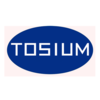焊接溫度對碳鋼/奧氏體不銹鋼擴散焊接頭界面組織及性能的影響焊接溫度對碳鋼/奧氏體不銹鋼擴散焊接頭界面組織及性能的影響Effect of bonding temperature on the interfacial microstrctrure and performance of mild steel/austenite stainless steel diffusion-bonded joint 采用真空擴散焊接方法對Q235A低碳鋼與AISI304奧氏體不銹鋼進行固相擴散連接實驗,研究了焊接溫度對接頭界面組織形貌、力學性能和反應產物的影響。研究結果表明:Q235A低碳鋼/AISI304奧氏體不銹鋼復合界面附近形成了合金鐵素體層(Ⅱ區)和增C層(Ⅲ區),界面兩側異相組織通過擴散結成共用晶界。在焊接溫度850 ℃,焊接壓力10 MPa,焊接時間60 min條件下,接頭強度和韌性達到最大值,高于Q235A低碳鋼母材。焊接溫度過低(≤800 ℃),接頭中析出化合物Cr23C6,焊接溫度過高(≥900 ℃),接頭中會產生二次碳化物和金屬間化合物,脆性的化合物偏析相使接頭強韌性顯著下降。嚴格控制焊接溫度在850℃區間,并在焊后迅速淬火越過低溫區,可有效避免脆性化合物偏析,從而保證擴散焊接頭的性能。 The Q235A mild steel and AISI304 austenite stainless steel were subjected to solid diffusion welding by vacuum diffusion bonding approach to investigate the influence of welding temperature on the interfacial morphology, microstructural constituents and mechanical properties. The results show that the single ferrite layer (zone II) and carbon-enriched layer (zone Ⅲ) were formed nearby the bonding interface of Q235A mild steel and AISI304 austenite stainless steel, and heterogeneous microstructure on both sides of interface formed a common grain boundary by diffusion. The strength and toughness of the bonded joint were highest, for welding temperature of approximately 850 ℃, welding pressure of beyond 10 MPa, and welding time of approximately 60 min, which was larger than those of the Q235A mild steel layer. Otherwise, the precipitate phase Cr23C6 easily formed at a relatively lower temperature (e.g. ≤800 ℃), whereas the secondary carbides and intermetallic compounds formed at a relatively higher temperature (e.g. ≥900 ℃). Both cases would dramatically deteriorate the strength-toughness of the bonded joint. Therefore, it was proposed that the brittle precipitate phases can be effectively avoided by controlling the welding temperature to approximately 850 ℃, thus ensuring the resulting performance of the bonded joint.
|







